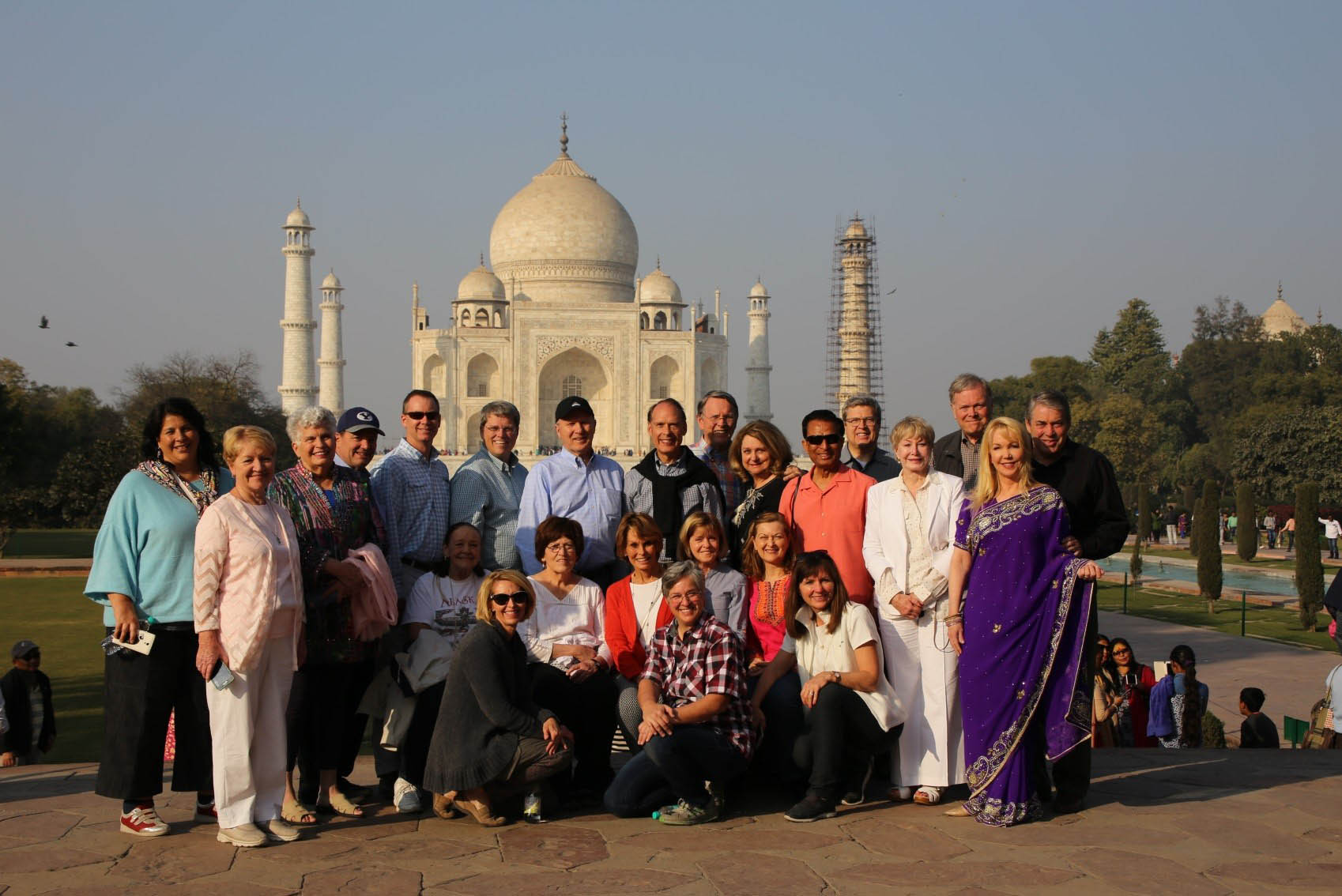2017 IAC Enrichment Extension to India

by Sandy Stephenson
On January 13 – 22, Center leadership and several members of the International Advisory Council (IAC) attended a religious freedom conference and participated in a tour of various cities in India. The conference was held in Hyderabad 13 – 15 January; the program was entitled, “Peace, Stability, and Sustainable Development: The Role of Religion”. The IAC members were able to listen and learn from academic scholars, government dignitaries, and religious leaders, and found the conference to be enlightening and informative.
Center leaders and IAC members visited many well-known historical sites in Hyderabad, including:
- Golconda Fort, once famous for its diamond mines;
- the Qutub Shahi Tombs, which contain many mosques and tombs built by various kings; and
- Chowmohalla Palace, the residence of Hyderabad’s former rulers, the Nizams.
After the conference, the group traveled to Udaipur, where many beautiful palaces – most of which have now been converted into hotels – surround Lake Pichola. The grandest palace is the beautiful City Palace, which overlooks the lake. Other highlights include:
- The Hindu Jagdish Temple, the largest temple in Udaipur;
- an awe-inspiring lake boat cruise to view the many historical landmarks along the shore, and Jag Mandir, a charming palace built on an island; and
- a tuk tuk ride through the chaotic city streets to the crowded city bazaar, while maneuvering around stray cows, cars, trucks, and carts.
The group traveled on to Jaipur, the old walled city known as the Pink City. It had been painted red to welcome England’s Prince Alfred in 1853, and the fading old buildings retain their hue. Highlights include:
- An unforgettable camel ride in the foothills of the Aravali Range;
- the City Palace with its exquisitely detailed architecture;
- a memorable elephant ride to the top of the massive 11th century Amer Fort and palace complex; and
- an entertaining walk through the colorful bazaars.
Agra was the next stop, the city of the Taj Mahal. The group marveled at their visit to the legendary Taj Mahal, one of the Seven Wonders of the World. It is celebrated for its architectural magnificence and aesthetic beauty. It was built by the Emperor Shah Jahan in memory of his wife; and their tombs are within the white marble mausoleum. It took 22 years and over 20,000 workers to complete, from 1630 – 1652. The group also toured the expansive Agra Fort, with its magnificent Mughal architecture, and intricate carvings, paintings and inlaid marble.
In New Delhi, the group participated in a significant meeting with international religious scholars for the launching of an academic, apolitical and non-governmental regional association to be known as the South Asia Consortium for Religion and Law Studies (SACRALS), with Professor Tahir Mahmood as its first president. The trip concluded in Delhi with visits to the beautiful red hued Jain Temple; Jama Masjid, the largest mosque in Asia; and an unforgettable experience on crazy rickshaw rides through the city to the lively bazaar.
The religious freedom conference was an excellent time for the IAC to hear first-hand the religious liberty concerns and challenges facing South Asia, how these challenges are being addressed, and the impact the Center continues to have on religious freedom in this part of the world. The tour was an exceptional experience for Center personnel and the IAC members to gain a great appreciation for the incredible country of India – the people, their goodness, faith, and traditions; the amazing sites, and intriguing culture.